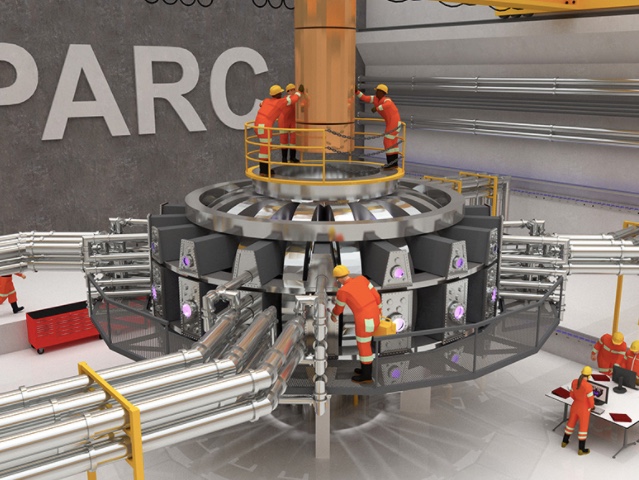A Power Company Just Gave MIT $30 Million to Build the World's Strongest Electromagnet

Scientists want to power cities with the same high-energy explosions that power the hearts of stars. This process is called nuclear fusion, and it results (in stars, at least) in massive amounts of sustainable, zero-carbon energy.
According to scientists at the Massachusetts Institute of Technology (MIT), a new $30 million research initiative may make this long-sought-after energy source a widespread reality on Earth within the next 15 years.
MIT researchers have teamed up with a new private company called Commonwealth Fusion Systems (CFS) to carry out a rapid research project that they say could dramatically accelerate fusion energy technology. The ultimate goal of the project is to build a compact, fully functional fusion reactor called a tokamak, which could fit on a truck and produce 100 million wattsof power, the researchers said in a statement.
But the first step is to create "the world's most powerful superconducting electromagnets," a key component in building the reactor. Supported by $30 million in funding from CFS, the MIT team hopes to finish this first stage of the project within the next three years. [Science Fact or Fiction? The Plausibility of 10 Sci-Fi Concepts]
"Advances in superconducting magnets have put fusion energy potentially within reach, offering the prospect of a safe, carbon-free energy future," MIT President L. Rafael Reif said in the statement.
Cool! …What is fusion power, again?
Fusion occurs when two lightweight atoms fuse together to form one heavier atom. Because the mass of the new atom is less than the mass of the two constituent atoms, this fusion produces massive amounts of excess energy in the form of light and heat. This process occurs naturally (and constantly) inside stars as they fuse hydrogen to create helium.
Scientists believe they can re-create this process on Earth usingcommon atoms such as hydrogen, which can be extracted from water. However, to produce a net energy gain from the reaction, they'd first need to generate enormously high temperatures (upward of 176 million degrees Fahrenheit, or 80 million degrees Celsius) to heat that hydrogen into a plasma state — an extremely high-energy state of matter in which atoms are stripped of their electrons. When freed of their electrons, plasmas become electrically conductive and can be controlled by magnetic fields.
Sign up for the Live Science daily newsletter now
Get the world’s most fascinating discoveries delivered straight to your inbox.
The caveat, of course, is that plasma that hot would instantly burn through any container it came in contact with. That's where the superconducting magnets come in. Using powerful magnetic fields, researchers can actually hold superheated plasma in place without it touching the walls of the reactor.
The world's strongest magnets
Over the next three years, MIT plans to construct electromagnets four times as strong as any magnets previously used in fusion experiments, the researchers said. The magnets will be made of a new superconductive material called yttrium-barium-copper oxide, which can be applied relatively cheaply via steel tape. The researchers will install the magnets in a prototype fusion reactor called Sparc, which they believe could be capable of producing 100 million wattsof power — enough to power a small city with safe, sustainable, carbon-free energy.
If Sparc works according to plan, it could become the template for creating a commercial fusion power plant that's twice as large, producing as much power as many current power plants do but without the greenhouse gas emissions. The world's first functioning fusion plant could become operational within 15 years, according to the MIT statement.
Meanwhile, other large-scale experiments in fusion energy are underway around the world, including the construction of the International Thermonuclear Experimental Reactor (ITER) in France. Launched in 2007, the ITER is a partnership of 35 countries with an estimated completion date of 2040.
Originally published on Live Science.

Brandon is the space/physics editor at Live Science. His writing has appeared in The Washington Post, Reader's Digest, CBS.com, the Richard Dawkins Foundation website and other outlets. He holds a bachelor's degree in creative writing from the University of Arizona, with minors in journalism and media arts. He enjoys writing most about space, geoscience and the mysteries of the universe.










